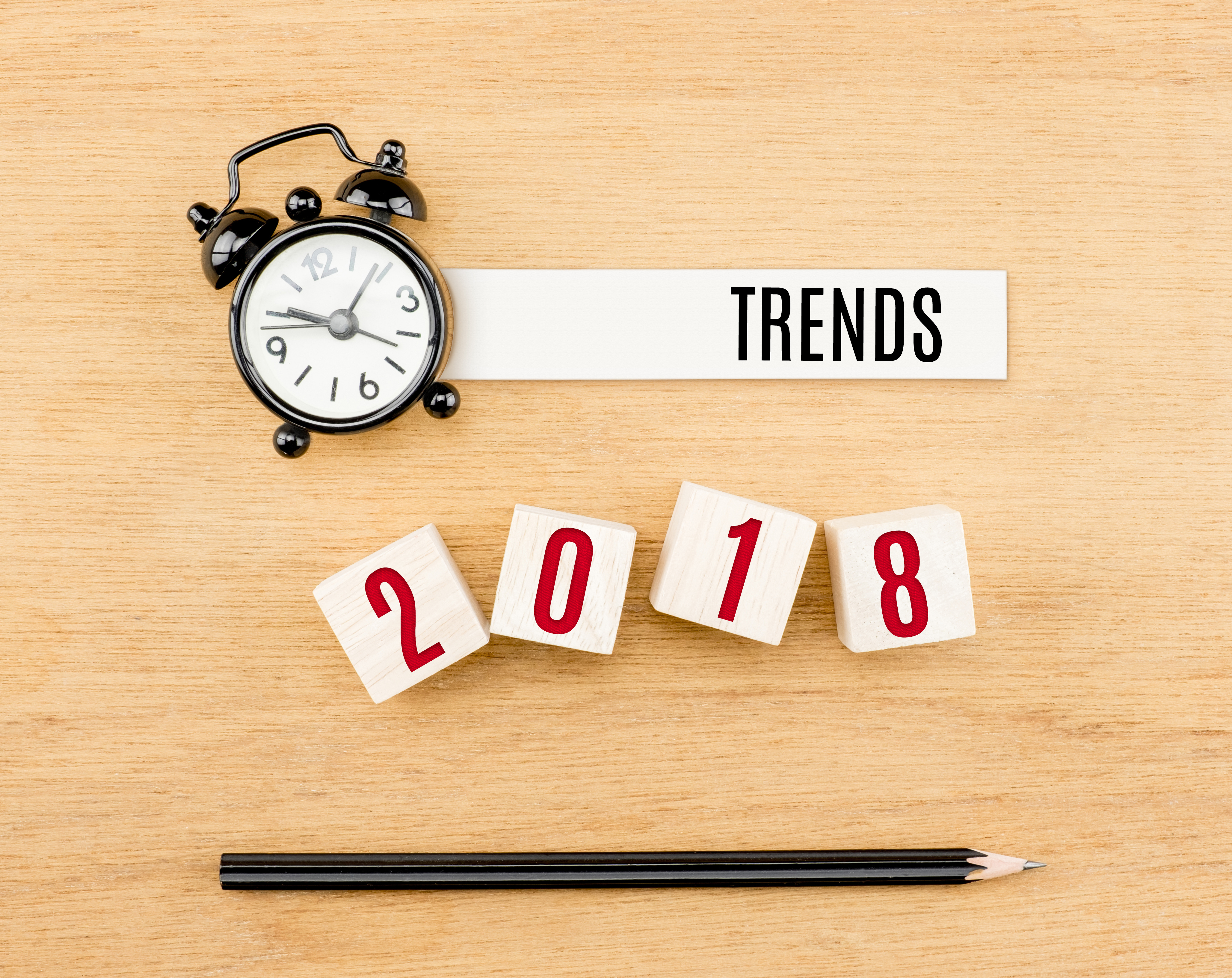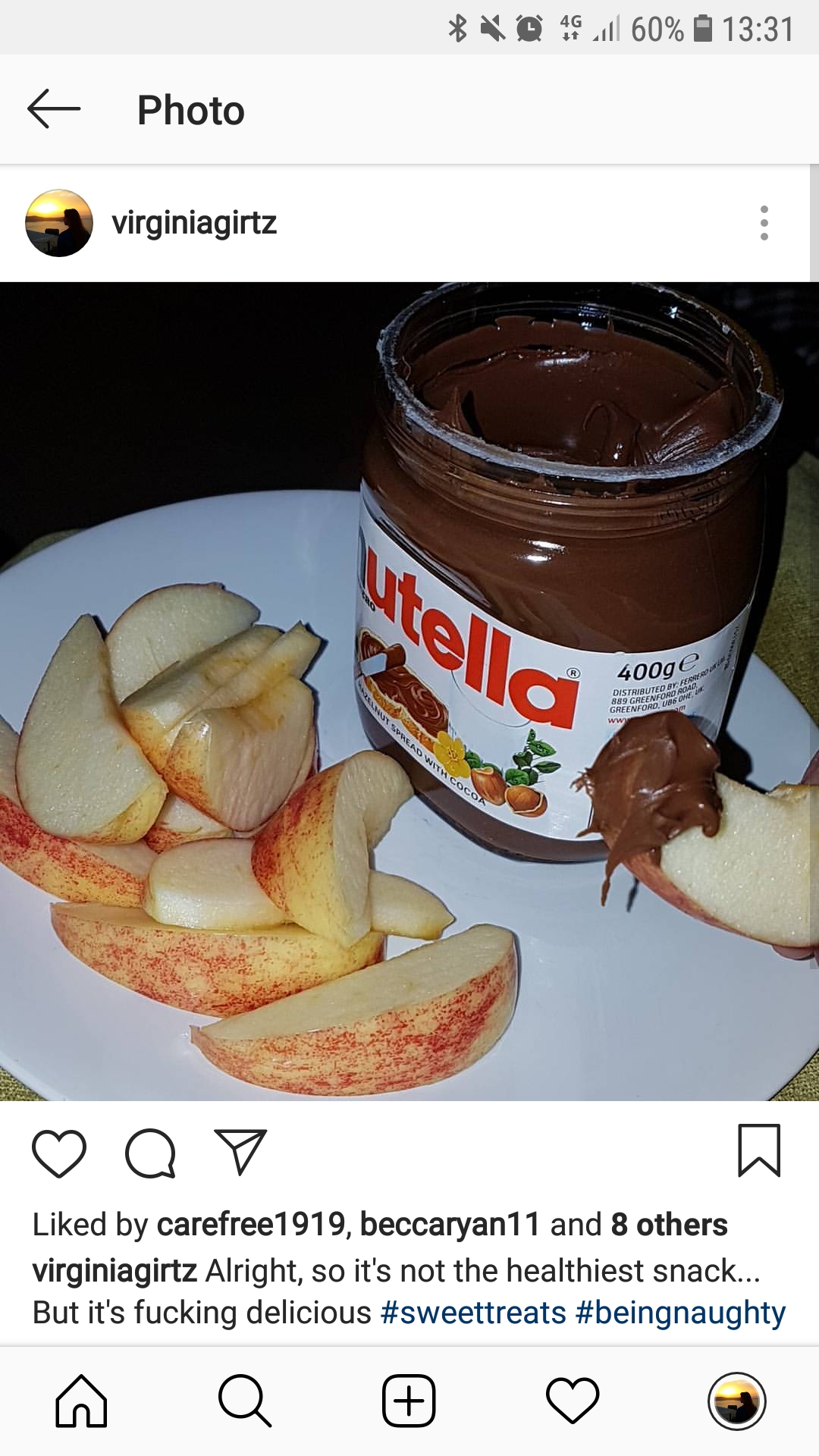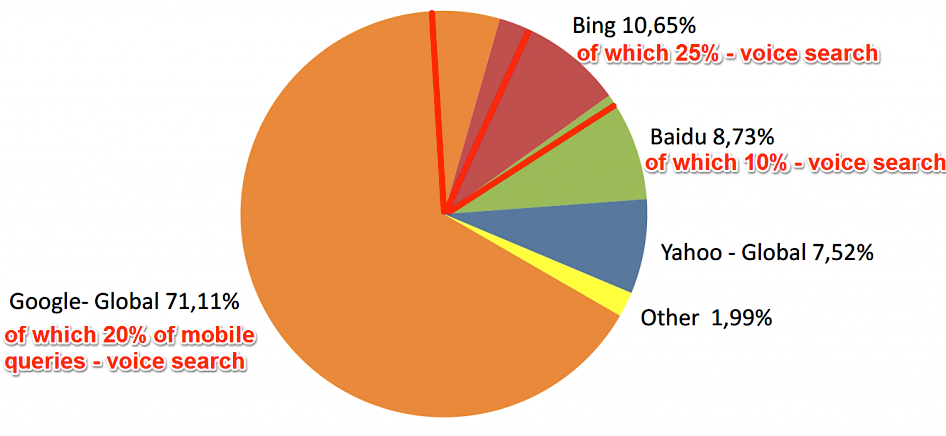
Every year around January, the digital, techy know-it-alls go on to write their blog about what to look out for in the coming year. I would like to say that we were one of the know-it-alls, but amongst the re-launch of our website (which we hope you like by the way?) and some new wins with clients such as Henkel UK and Right Guard, we were a little busy to come up with our predictions for the year (sorry guys).
However! What would be interesting to see, now we are half way through 2018, is where are we with these digital trends? Have you picked up on any of the following predictions? Or have any of the larger brands successfully used these new technologies to heighten their brand presence and develop their understanding of the ever more tech-savvy audience? Let’s take a quick recap to see what the biggest predicted trends in 2018 were:
- Artificial intelligence
- Chatbots
- Social Vision
- Visual Search
- Voice Search
Let’s start off with everyone’s favourite, AI:
Artificial Intelligence
Artificial Intelligence plays a crucial role in the marketing process today. It is so huge that you will notice it plays as a theme in all of the trends that were predicted for the year. AI can analyse consumer behaviour and search patterns, utilising data from social media platforms and blog posts to help businesses understand how users and customers find their products and services.
Artificial intelligence also offers information and tips to users by getting into conversations. According to Gartner, by 2020, 85% of customer interactions will be managed without the need for a human.
But instead of thinking “ah shit, that’s me out of a job then”, companies are looking at ways to enhance their services by using AI. And after all, someone has to control the robots in the first place, right?
So, who has made a name for themselves this year using AI technology? Well instead of listing them all here, one of our clever writers at Pull wrote a whole blog about how AI is improving lives every day which includes examples from companies such as IBM, BBC and Google. Some of the examples in there are really interesting. So interesting in fact that *cue Pull plug* we at Pull are hosting an event all around how AI can achieve outstanding creative and commercial results for your business. Our event which takes place on 19th September will have top speakers from Microsoft, the ex MD of L’Oreal and the founder of NY Collective who will share their experience with AI and the results that came from it.
So, as for how are Pull using AI to help drive results for our customers? Well, we’re becoming best mates with some of the top people in the technology business who are helping us to create clever new solutions for some of our clients. Instead of hiding away from the advancing technology, we’re embracing it to enhance our service offerings.
Chatbots
Yep. Another technology that was predicted to be big in 2018. And again, very much down the AI route.
Now, chatbots aren’t exactly new to 2018, but 2018 was the year where brands were told they should start thinking about how to use social media bots to help get the content their audience are looking for faster. It has been reported that 61% of consumer chatbot interaction was centred around customer service-related questions. And Grand View Research found that 45% of end users prefer chatbots as the primary mode of communication for customer service inquiries.
According to our blog To Chat or Not To Chat, only 9% of fortune 500 companies were actually using chatbots. This was predicted to increase by 233% year on year. So which companies are using a chatbots at the moment, and what kind of chatbots are out there?
An article by New Gen Apps lists out 11 trending chatbots for 2018 which range from a bot called Poncho who is a weather forecaster (always useful for us Brits) right through to Melody, a chatbot created by Baidu which was designed to help doctors by facilitating faster flow of information between doctor and patient.
And how are Pull using chatbot technology? Well, we’ve developed a chatbot that is aimed to help the events market which will be unveiled at our AI Event in September. At time of writing this blog, we don’t have a name for our bot yet, but stay tuned because us creative marketing technologists will come up with something catchy in the next couple of weeks!
Social Vision
Social vision is basically the love child of television and social stories. Photos and videos are a huge part of our cultural conversation. 2.8 trillion photos were shared on social networks in 2017 and it is predicted to grow 15% by the end of 2018.
Technically, social vision started in 2003 with Myspace who were one of the first platforms to give us the ability to upload pictures of ourselves onto the world wide web. Remember that bathroom selfie you uploaded as your profile picture? And that’s another thing - the selfie. This was a word that become a phenomenon and well-known vanity action back in 2013. But as social platforms started popping up thick and fast, apps like Snapchat, Pinterest and Instagram started to shape how social vision was to be used.
But how was social vision intended to be used in 2018? Through the rise of “web TV” of course! Have you noticed Instagram now have their own TV channel IGTV? And YouTube launched “Reels”, a story format of their own. Who knew you could “go live” on YouTube! What social vision enabled brands and users to become were storytellers.
Storytelling became a buzz word in the marketing world, so much so, that even we at Pull have created a video (soon to be launched) which focuses very much on our story, and how we exist to help uncover and communicate our customer stories. Video was the biggie for 2017, but this changed into social vision for 2018 with the importance of storytelling as a focus.
So, what does this mean for 2019 I wonder? First video, then social vision to what next…4D storytelling?
Visual Search
n 2018, we were advised to “let your camera do the talking” by social giant, Facebook. The question is, can we listen to this conversation? There are approximately 350 million photos being added per day just on Facebook alone and Instagram has around 95+ million photos added per day! But how often do you take a picture of something and hashtag or mention the brand in it? For example, the picture below:

This is an Instagram post I did a while ago, but you’ll notice I didn’t tag in Nutella into the post. According to The Richards Group, around 85% of photos that include a brand are not captioned or tagged with reference to that brand. So how do we monitor brand equity? Well, there are advances in computer vision by companies that allow social listening tools the ability to visually listen too. Yet another string to the AI bow. By applying AI to social photography, companies such as Ditto Lab can use visual listening to help brands understand their place (or the place of their competitors) in consumers’ lives in a way that text conversation cannot.
(This also ties in well with another Pull theme: “How do un-listed mid-sized brands evaluate their brand-building efforts or brand equity?” We can certainly see a day when a combination of Ai and visual recognition could form the basis of a ‘brand equity evaluator’ that marketers could use to put an objective value on their work.)
At the beginning of 2017, Pinterest launched “Pinterest Lens” which allowed users to find more inspiration from images they already liked (or pinned if you will). The idea was to upload your image through the Pinterest Lens, and in return you would be served reels of imagery that would bury you further and further into the Pinterest rabbit hole.
Over a year on since the launch of Pinterest Lens, the latest stats show that people carry out more than 600 million visual searches with Lens every month, which marks an increase of 140% year on year.
And of course, the other giant to jump on the visual search bandwagon was of course Google with their Google Lens, launched September 2017. So far, Google Lens is still a tool used to help users identify anything from famous artwork to buildings (including storefronts), look up product information, and save dates from posters to your calendar. Where it will give brands much bigger impact and results is when they enable visual search for search ad advertisers.
Think about it, if tomorrow’s search engine is a lens, it follows that a lens is where tomorrow’s search advertising will live. In 2019, brands should be ready to take advantage of search ads beyond the search bar of a computer. Using these ads, brands have the opportunity to begin to interact with consumers as they search and experience the real world.
Voice Search
Voice search became one to watch in 2018 due to the increased purchase of voice assistants such as Alexa and Google Home. Almost all of my friends own some sort of smart assistant. Millennials hey?
Earlier this year, we wrote a blog all about why you shouldn’t dismiss voice search in your digital marketing strategy which stated that 85% of brands are now working on their voice strategies. Probably a good thing since it has been predicted that by 2020 the sale of smart assistants will rise to 15.1 million and 50% of all searches will be voice searches!

Source: Singlegrain
So how has voice search trended in 2018? Well to be honest, it hasn’t done anything massive as of yet. However, what it has done is become the catalyst for an increase in sales for smart speakers. Smart speakers are almost exclusively reliant on voice commands to operate, conditioning people to resolve their questions and accomplish tasks using voice-based queries.
The importance of voice search really comes down to your SEO strategy and how you can ensure that your website will still rank when the rise of voice search takes over traditionally text search.
Research from Distilled CEO Will Critchlow found that 75-80% of mobile voice searches are most likely “incremental” meaning that these searches were more tailored around carrying out an action, retrieving information or searching for a personal list or library, therefore, not being meaningful enough searches for brands to rank against. This leaves roughly 20% of mobile voice searches that are “real” searches and have the possibility to rank for. Based on Hitwise research, approximately 58% of all Google searches are carried out on mobile, of which 20% are voice commands or queries, and 20% of those are “real” rankable searches. So, if Google carry out 3.5 billion searches per day, correct me if I’m wrong, but that works out to be 81.2 million eligible voice searches that a brand could rank for per day. It’s still a large number for sure, but that’s only 2.32% of total search volume. As ever, as someone once said: “Everyone over-estimates the impact of new technology in the short-term, but underestimates the impact in the long term”.
Voice search will become more powerful over time, so companies will definitely need to prepare their SEO strategy for it. But all things considered, if only 2.32% of voice searches are eligible for ranking, I’d say park it for now and focus on something else.
So, what’s the prediction for 2019?
Well if you’ve made it this far in the blog, thanks! 2019 predictions are tricky, especially as we haven’t quite finished 2018. However, according to some top digital trend authors, 2019 doesn’t look like it will be all that different to 2018. See quote above!) Chatbots, Video, AI are all still featured in the 2019 predictions. The terms “conversational marketing” and “micro moments” seem to have cropped up in a few articles though.
Where I would like to see a difference is how these technologies are marketed better. Although I have listed some examples of brands that are already using these technologies, none of them are huge stories yet. The technology is still quite new, and brands are still exploring the boundaries.
All I can say is it is an interesting time for technology. Hoverboards (actual hoverboards, not those rubbish electronic skateboards that blow up), teleportation’s and mind control are only a few decades away!
Posted 17 August 2018 by Virginia Girtz